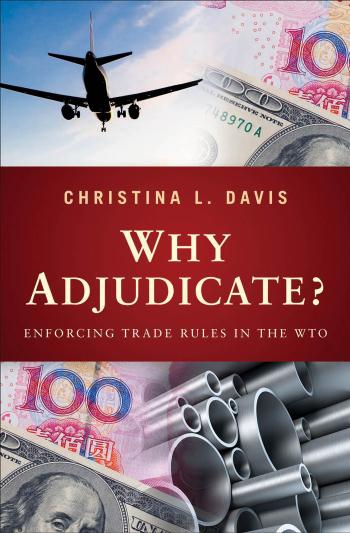Why Adjudicate?: Enforcing Trade Rules in the WTO by Christina L. Davis

Author:Christina L. Davis [Davis, Christina L.]
Language: eng
Format: epub, pdf
Tags: International Relations, Trade & Tariffs, Treaties, International, Intergovernmental Organizations, History & Theory, Political Science, Business & Economics, General
ISBN: 9780691152769
Google: -3mEv4vsxBAC
Goodreads: 13748145
Publisher: Princeton University Press
Published: 2012-05-27T00:00:00+00:00
Adjudication with China
Unwilling to initiate a WTO complaint or take unilateral measures to pressure China on the currency issue, the administration has instead responded to pressure from Congress with actions on other trade barriers. It filed the first WTO complaint against China in 2004 against discriminatory tax policies (rebates on the value-added tax conferred to local producers) affecting the semiconductor industry. The U.S. semiconductor industry association had been requesting a WTO complaint for over a year with arguments that the 14 percent tax differential was an unfair burden for sales in the Chinese market, which are valued at $19 billion.118 The VAT rebate policy had been adopted by China in 2000 and was viewed as an effort to promote foreign investment and local production over importsâindeed half of the companies to receive the rebates were local subsidiaries of multinational firms like Intel (Liang, 2007, p. 108). Experts agreed it was likely the Chinese policy would be found in violation of WTO rules. Talks at both industry and government levels over three years, however, had not brought agreement.
Within four months after filing the complaint, a settlement was reached during the consultation period with China agreeing to end the rebate system over nine months. Since the U.S. industry would continue paying the same tax rate, the change was a withdrawal of the benefit that had been conferred to a handful of Chinese and foreign companies. A spokesperson for Chinaâs largest semiconductor company told China Daily that ending the rebate would have little material impact on industry performance.119 Liang (2007) explains that the Chinese semiconductor industry was consulted by the Chinese government and favored ending the rebate to replace it with other support policies that would be WTO consistent and more broadly help the domestic industry as a whole (only a small subset of firms had qualified for the rebate). USTR Robert Zoellick announced the outcome at a press conference standing in front of a banner declaring âreal resultsâ and claiming that the administration makes progress through negotiations but was not afraid to use litigation against China.120 Having settled early before any legal ruling, the Chinese government was able to continue to insist its policy had not been a violation of WTO rules. The first U.S.-China WTO dispute was a victory for all as both industries were satisfied by the outcome, the USTR demonstrated to a home audience its willingness to âget toughâ with China, and the Chinese government avoided the stigma of a violation ruling.
This was followed by several more complaints by the United States. In another complaint to target Chinese industrial policy, on March 30, 2006, the United States and EU (later followed by Canada) filed complaints against discriminatory tariff classification of imported auto parts that represented a de facto barrier against imports.121 In its tariff schedule, China had agreed to charge a 25 percent tariff on imported vehicles and a 10 percent tariff on imported parts, but starting in 2005 it assessed the higher 25 percent duty on a manufacturer
Download
Why Adjudicate?: Enforcing Trade Rules in the WTO by Christina L. Davis.pdf
This site does not store any files on its server. We only index and link to content provided by other sites. Please contact the content providers to delete copyright contents if any and email us, we'll remove relevant links or contents immediately.
Zero to IPO: Over $1 Trillion of Actionable Advice from the World's Most Successful Entrepreneurs by Frederic Kerrest(4064)
Machine Learning at Scale with H2O by Gregory Keys | David Whiting(3640)
Harry Potter and the Goblet Of Fire by J.K. Rowling(3612)
Never by Ken Follett(3533)
Ogilvy on Advertising by David Ogilvy(3338)
Shadow of Night by Deborah Harkness(3177)
The Man Who Died Twice by Richard Osman(2811)
Book of Life by Deborah Harkness(2721)
My Brilliant Friend by Elena Ferrante(2704)
How Proust Can Change Your Life by Alain De Botton(2615)
0041152001443424520 .pdf by Unknown(2599)
Will by Will Smith(2581)
The Tipping Point by Malcolm Gladwell(2562)
How to Pay Zero Taxes, 2018 by Jeff A. Schnepper(2503)
Purple Hibiscus by Chimamanda Ngozi Adichie(2493)
Hooked: A Dark, Contemporary Romance (Never After Series) by Emily McIntire(2423)
Rationality by Steven Pinker(2150)
Borders by unknow(2119)
Daughter of Smoke and Bone by Laini Taylor(2083)
